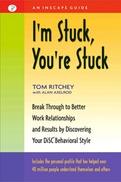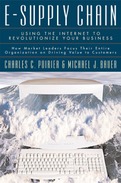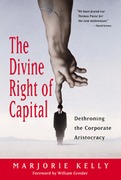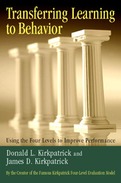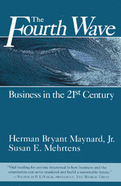- Presents a personal profile that takes less than ten minutes to complete but offers lessons for a lifetime
- Helps you focus on your reactions to a particular situation, reflect on what’s working and what’s not, and act in more conscious and productive ways
- Exposes the limitations of traditional performance improvement strategies
Often when people feel stuck, they try to change something about themselves. Authors Ritchey and Axelrod suggest that instead they should learn to see situations in new ways and create new options for themselves and others. That process begins with DiSC, an assessment tool that reveals what style one typically uses: Dominance (direct and decisive), Influence (optimistic and outgoing), Supportive (sympathetic and accommodating), and Conscientious (concerned and correct).
This book teaches readers how to recognize their own style and its implications, how to read the style of others, and how to choose the most effective style (or combination of styles) for any situation. I’m Stuck, You’re Stuck will help readers better understand why they and other people do the things they do in difficult situations and learn to respond to these situations mindfully, respectfully, and effectively.
- Presents a personal profile that takes less than ten minutes to complete but offers lessons for a lifetime
- Helps you focus on your reactions to a particular situation, reflect on what’s working and what’s not, and act in more conscious and productive ways
- Exposes the limitations of traditional performance improvement strategies
Often when people feel stuck, they try to change something about themselves. Authors Ritchey and Axelrod suggest that instead they should learn to see situations in new ways and create new options for themselves and others. That process begins with DiSC, an assessment tool that reveals what style one typically uses: Dominance (direct and decisive), Influence (optimistic and outgoing), Supportive (sympathetic and accommodating), and Conscientious (concerned and correct).
This book teaches readers how to recognize their own style and its implications, how to read the style of others, and how to choose the most effective style (or combination of styles) for any situation. I’m Stuck, You’re Stuck will help readers better understand why they and other people do the things they do in difficult situations and learn to respond to these situations mindfully, respectfully, and effectively.
2002
E-SUPPLY CHAIN, the most advanced and up-to-date publication of its kind, reveals how companies can form the necessary business alliances to combine the power of supply chain and the Internet-two of most versatile and effective business tools of the new century.
E-Supply Chain shows how leading companies have forged a one- to two-year lead over competing supply chain networks using the marriage of supply chain and e-commerce to achieve market dominance. The authors present a step-by-step process for establishing joint efforts and combining best practices to create an unbeatable network of seamless response to specific business customers or consumer groups.
Rich in details and action studies, E-Supply Chain is a hands-on guide to implementing the changes necessary in each of the major functions of a typical firm-purchasing, marketing, sales, customer service, engineering, planning, manufacturing, logistics, and more. The authors detail how the e-supply chain network evolves to become a global "value chain constellation," destined to dominate specific markets and industries while always keeping the satisfaction of the customer or consumer as the ultimate goal.
Combined with Poirier's two earlier books, Supply Chain Optimization and Advanced Supply Chain Management, E-Supply Chain completes the trilogy that can take any organization from its beginning stages to full application of advanced supply chain and e-commerce techniques.
- From the foremost expert on supply chain management
- Shows how market leaders are focusing their entire organization on driving value to customers
- A practical guide for developing effective supply chain plans and e-business models
- Reveals how leading firms have forged up to a two-year lead over competing supply chain networks
- Rich in details and action studies of what works and what doesn't
- Updated paperback edition includes a new chapter and a Reader's Guide
- Explores the real causes of the Enron fiasco and other recent corporate scandals
- Explodes the myth that the stock market is "democratizing" wealth
- Gives practical guidance to help employees and communities change corporate governance and unfetter the genius of the free market
- By the author of the bestselling classic Evaluating Training Programs
- Addresses today's most difficult training challenge: transferring what's taught to actual employee performance
- Includes best practice case studies from a dozen top-performing companies
Donald Kirkpatrick's famous four level model has become the model for evaluating the effectiveness of training programs. In Transferring Learning to Behavior, Donald and his son James show how this model can be used to confront what has always been the most difficult training challenge: getting people to apply what they learn once the training is over.
This book begins with an overview of the current state of the four levels, and outlines the three main reasons for the fatal disconnect between learning and behavior. Part II describes the five foundations for success that must be in place before moving on to confront the true challenge of transferring learning to behavior. Part III addresses the main question, showing precisely how to ensure that there is organizational support, and employee and managerial accountability, for putting the new behaviors into practice. The book closes with 12 best-practice case studies from companies such as Toyota, First USA Bank, Nextel, and Anthem Blue Cross/Blue Shield, that bring alive the concepts, principles, and techniques presented throughout the earlier chapters.
Now, more than ever, the pressure is on to demonstrate concrete results from training--but techniques like Return on Investment calculations aren't impressive if it's obvious that new behaviors aren't becoming business as usual. Transferring Learning to Behavior shows how an already proven model can be applied to solve this most difficult problem and produce concrete results.
- By the author of the bestselling classic Evaluating Training Programs
- Addresses today's most difficult training challenge: transferring what's taught to actual employee performance
- Includes best practice case studies from a dozen top-performing companies
- By the authors of the bestselling Repacking Your Bags (over 300,000 copies sold) and Whistle While You Work (over 40,000 copies sold)
- While most related books deal with aging and retirement as decline, this is a new and enlightening approach to what the authors call "vital aging"
- Uses the timeless, primordial metaphor of fire as a powerful organizing device to describe the four key characteristics of "new elders"
1996
Applying the concept of historical waves originally propounded by Alvin Toffler in The Third Wave, Herman Maynard and Susan Mehrtens look toward the next century and foresee a "fourth wave," an era of integration and responsibility far beyond Toffler's revolutionary description of third-wave postindustrial society. Whether we attain this stage of global well-being, however, will depend on how well our business institutions adapt and change.
The Fourth Wave examines the ways business has changed in the second and third waves and must continue to change in the fourth. The changes concern the basics-how an institution is organized, how it defines wealth, how it relates to surrounding communities, how it responds to environmental needs, and how it takes part in the political process.
Maynard and Mehrtens foresee a radically different future in which business principles, concern for the environment, personal integrity, and spiritual values are integrated. The authors also demonstrate the need for a new kind of leadership-managers and CEOs who embrace an attitude of global stewardship; who define their assets as ideas, information, creativity, and vision; and who strive for seamless boundaries between work and private lives for all employees.


